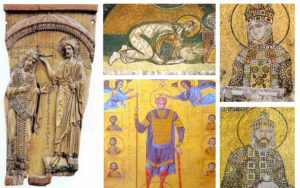
People:
● All the present-day people are fictitious.
● Synesthesia is real. I hope to further explore Amber’s skill in future novels.
● The Byzantine-era characters are real except for Father Alexios. I have imagined what their feelings may have been based on research. Very little is recorded about Patriarch Stephen.A timeline of the Macedonian Dynasty is included on a separate page.
● The passages portraying John the Elder writing from Patmos are my own speculation based on Biblical reading and research.
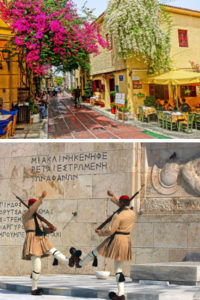
Places:
● The University of Fort Worth is fictitious and bears no relationship to Texas Christian University in Forth Worth, Texas
● Jackson Textile Importers and the Classics Institute are both fictitious.
● The tourist sights around Athens are real. I visited Greece about 10 years ago. I loved the Plaka, Agora and Acropolis. (The Greek ceremonial guards were very manly despite their skirts and pompoms.)
● Meteora and its mountain-top monasteries are real and worth visiting.
● I traveled to Varlaam monastery. It is open to tourists and has monks who wear athletic shoes and carry cellphones. Its image of the Last Judgment is striking as visitors enter the chapel. That sight is what inspired me to write this novel.
However, I have added or changed some of Varlaam’s features. I gathered key images in just a few locations so the novel pace wasn’t slowed by weeks of driving to various monasteries.
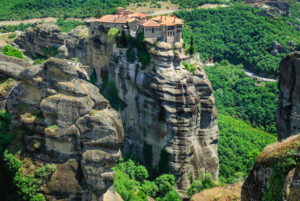
– In reality, several buildings have been converted into museum, gift shop and facilities for visiting tourists. For example, Varlaam’s original refectory is now a museum for visitors. Through the magic of fiction, I restored the dining hall and “borrowed” the “Ladder of Divine Ascent” from its home at St. Catherine’s in the Sinai.
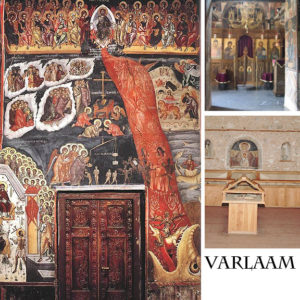
– I moved a Revelation fresco series from Dionysiou Monastery to Varlaam.
– Surely Varlaam had a library. Once source said it had a manuscript attributed to Constantine Purple-born. I have re-created and stocked the library in this mystery.
I believe all Meteora manuscripts are now secured in archival conditions at St. Stephen’s Monastery, watched over by holy women.
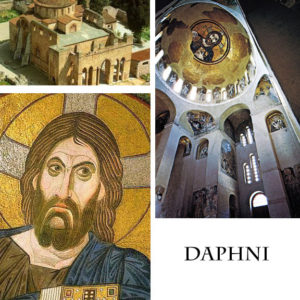
● The two historic octagon churches in Greece are real
– Daphni monastery with its Angry Jesus mosaic in the dome has undergone repairs for earthquake damage and is again open to tourists. I added the mosaic of Alexios and Theodora.
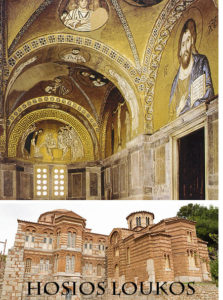
– Hosios Loukos (St. Luke’s) is very real. It has beautiful mosaics which I have tried to describe accurately. The ceiling in the crypt below features eight-pointed stars. My only revision is adding the captions 666 and 888 to one of the frescoes. The technique of wetting frescoes to “clear the fog” is acknowledged in a book about frescoes in Crete.
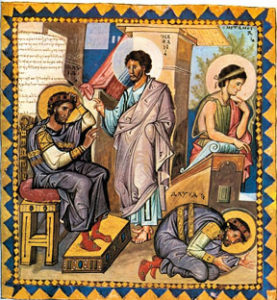
Artifacts:
Many artifacts from the Macedonian Renaissance were stolen in 1204 when soldiers returning from the Fourth Crusade sacked Constantinople (now Istanbul). The Crusaders’ efforts had been futile in the Holy Lands. To pay the Venetians for their ocean transport and take home some treasure, they attacked their fellow Christians.
● Constantine’s Psalter is real. Crusaders took it to France where it is in the national library. I “liberated” it and sent it to Varlaam with a few interior enhancements.
● The chalice for Constantine’s son, Romanos II, is at St. Mark’s Cathedral in Venice. If the son who ruled only three years had a chalice, surely Constantine Purple-born did as well.
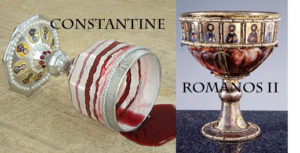
It has never been found, so I imagined what it might look like.
Symbols:
● The Biblical numerology is widely known.
● 888 as the number for Jesus Christ is acknowledged in Greek Orthodox and other authorities.
● The octagon is often used in church architecture, baptismal fonts, fountains and other places, especially in Catholic and Orthodox churches.
● The importance of purple dye is noted in the Bible. The Hebrew Scriptures mention purple dye used to make the tent of meeting. Paul is welcomed to Greece by Lydia, a dealer in purple cloth.
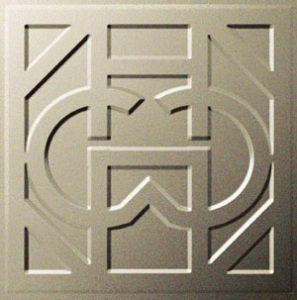
● I created the symbol “Omega Pi Eta” using the Greek Numerals for 888. I keep expecting to find it on some Christian item from history.
● The concept that Eight is the key to the Book of Revelation is again my own.
I hope my readers enjoyed learning about these things as much as I enjoyed seeing and researching them.
Coin images by Classical Numismatic Group, Inc. www.cngcoins.com
